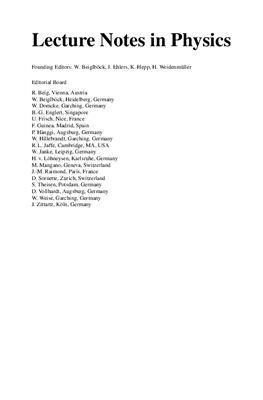Springer-Verlag Berlin, 2009, 214 pages
Many large-scale projects for detecting gravitational radiation are currently being developed, all with the aim of opening a new window onto the observable Universe. As a result, numerical relativity has recently become a major field of research, and Elements of Numerical Relativity and Relativistic Hydrodynamics is a valuable primer for both graduate students and non-specialist researchers wishing to enter the field. A revised and significantly enlarged edition of LNP 673 Elements of Numerical Relativity, this book starts with the most basic insights and aspects of numerical relativity before it develops coherent guidelines for the reliable and convenient selection of each of the following key aspects: evolution formalism; gauge, initial, and boundary conditions; and various numerical algorithms. And in addition to many revisions, it includes new, convenient damping terms for numerical implementations, a presentation of the recently-developed harmonic formalism, and an extensive, new chapter on matter space-times, containing a thorough introduction to relativistic hydrodynamics. While proper reference is given to advanced applications requiring large computational resources, most tests and applications in this book can be performed on a standard PC.
Many large-scale projects for detecting gravitational radiation are currently being developed, all with the aim of opening a new window onto the observable Universe. As a result, numerical relativity has recently become a major field of research, and Elements of Numerical Relativity and Relativistic Hydrodynamics is a valuable primer for both graduate students and non-specialist researchers wishing to enter the field. A revised and significantly enlarged edition of LNP 673 Elements of Numerical Relativity, this book starts with the most basic insights and aspects of numerical relativity before it develops coherent guidelines for the reliable and convenient selection of each of the following key aspects: evolution formalism; gauge, initial, and boundary conditions; and various numerical algorithms. And in addition to many revisions, it includes new, convenient damping terms for numerical implementations, a presentation of the recently-developed harmonic formalism, and an extensive, new chapter on matter space-times, containing a thorough introduction to relativistic hydrodynamics. While proper reference is given to advanced applications requiring large computational resources, most tests and applications in this book can be performed on a standard PC.

